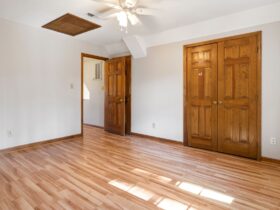Building a forever home is a big step. It’s more than choosing a pretty kitchen or picking a floor plan off the internet. This is where you’ll build routines, make memories, and possibly stay for decades. That’s why it’s important to think it through. From location to layout, everything matters.
Before diving into construction, take time to map out your priorities. It’s easy to get swept up in visuals and mood boards, but the focus should stay on function, comfort, and long-term fit. A good forever home grows with your life. It works for today and adapts to tomorrow. This article walks you through key things to think about before you begin the process.
Choosing the Right Builder Early On
One of the first and most important decisions is picking a builder. Your choice here shapes the rest of the project. A good builder doesn’t just follow instructions; they help you make the right ones. They bring practical advice, construction knowledge, and coordination skills to the table.
You’ll want someone who listens well, communicates clearly, and brings experience with custom home projects. They should understand that a forever home isn’t just about looks. It’s about building something that fits your lifestyle and stands the test of time.
For instance, Ballard Custom Homes works closely with homeowners to design and build homes that align with their vision, lifestyle, and long-term needs. They focus on both quality construction and thoughtful customization, which is critical when creating a home you’ll stay in for decades. Having a builder who understands these goals makes a real difference.
It also helps when your builder has a strong network of subcontractors, access to good materials, and a clear process for everything from permits to final walkthroughs. Ask questions early. Look at past projects. Don’t rush this step.
Be Clear on Your Long-Term Needs
A forever home should serve you now and later. Think about how your life might change in the next 10 or 20 years. Will you be working from home more often? Are you planning for a growing family? Do you want to live here as you get older?
Your layout should reflect those needs. Open floor plans are great, but think about how you’ll use the space day to day. Maybe you need an extra room that can work as a guest bedroom, office, or future nursery. Or you might want wider hallways, fewer stairs, and step-free showers down the line.
Storage is another major factor. Built-in cabinets, walk-in closets, and a well-organized garage can make your home feel more livable in the long run. Even smaller touches, like wider doorways or flexible lighting, can go a long way in making your home work for different stages of life.
Talk through these ideas with your builder. The more details you sort out now, the fewer changes you’ll have to make later.
Location and Lot Considerations
Where you build is just as important as what you build. Location affects everything from daily convenience to long-term value. Before settling on a lot, think about how close it is to schools, hospitals, grocery stores, and your workplace. Even if you work remotely now, your needs could change later.
A great neighborhood isn’t enough. Pay attention to the physical features of the lot. Look at sun exposure, natural slopes, and any large trees that may need to stay or go. These details can affect where your home sits and how much you’ll need to adjust the land before construction starts.
Check into zoning regulations and local building codes. Some areas limit what you can build or how high you can go. Others might have strict rules around landscaping or outdoor structures. It’s easier to adjust your plans early than get stuck in paperwork later. Utility access, drainage, and driveways should also be part of your lot research.
Design with Timelessness in Mind
Trendy design elements can be tempting, but they don’t always age well. When building a home you plan to live in long-term, go for choices that feel comfortable year after year. That doesn’t mean boring. It just means choosing elements that don’t feel outdated two years from now.
Stick with neutral colors and clean lines for major design features. You can always add personality through furniture, rugs, or artwork. These things are easier to update than tile patterns or cabinet colors.
Flooring is another place where lasting quality matters. Go for materials that hold up over time and work across different stages of life. Hardwood, for example, tends to look good and wear well in most settings. Lighting also makes a huge impact—include both natural and artificial sources to keep spaces bright and flexible.
Also, think about how rooms connect. The flow from kitchen to dining to living areas affects how you move through your day. Keep transitions smooth and layouts practical.
Budgeting Honestly and Realistically
Before building starts, have a full financial plan in place. That includes the cost of the land, building materials, labor, permits, and finishing touches like flooring and appliances. Talk openly with your builder about what you can afford, and stick to those numbers as closely as possible.
Set aside funds for unexpected expenses. Changes in material prices, minor design tweaks, or small structural changes can add up. A financial buffer keeps those surprises from turning into major stress.
Decide what matters most to you. Maybe it’s the kitchen, or the outdoor space, or energy-efficient upgrades. These are worth allocating more budget to. Other things can wait or be simplified. Don’t feel pressured to stretch just to match someone else’s build. Focus on what works best for you and your household.
Think About Efficiency and Sustainability
A forever home should be comfortable and cost-effective to live in. Energy-efficient systems can help with both. Think about adding double-pane windows, smart thermostats, and high-efficiency appliances. Over time, these features reduce your bills and increase comfort.
If your area gets plenty of sun, solar panels might make sense. Good insulation, low-flow plumbing fixtures, and proper sealing around doors and windows also make a big difference.
Sustainable materials like bamboo flooring, recycled countertops, or reclaimed wood are also worth exploring. These choices are often low-maintenance and built to last, which fits well with the idea of a long-term home.
Building your forever home is a personal journey. It’s about creating a space that fits your needs today and still feels right years from now. With thoughtful planning, the right team, and a clear vision, you can build something that truly lasts. Take it step by step, and make choices that support the way you want to live.








Leave a Reply